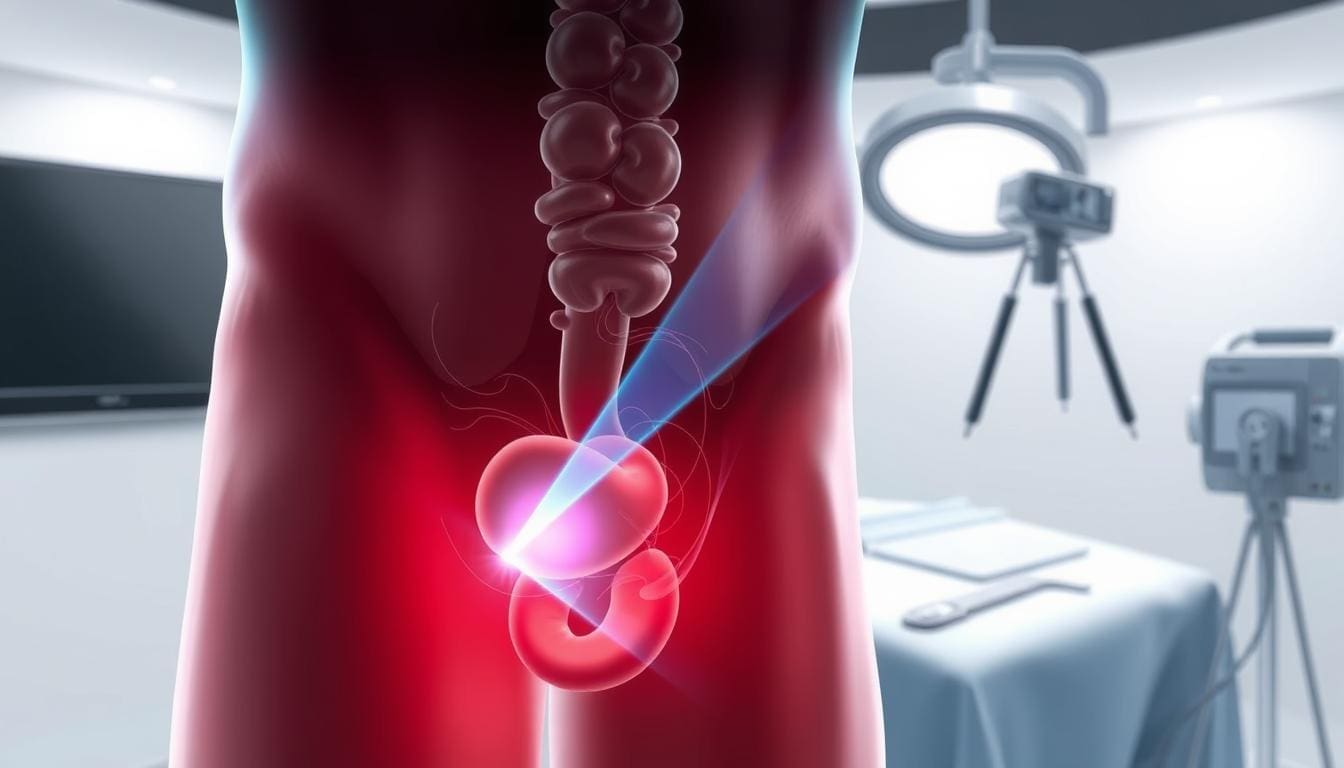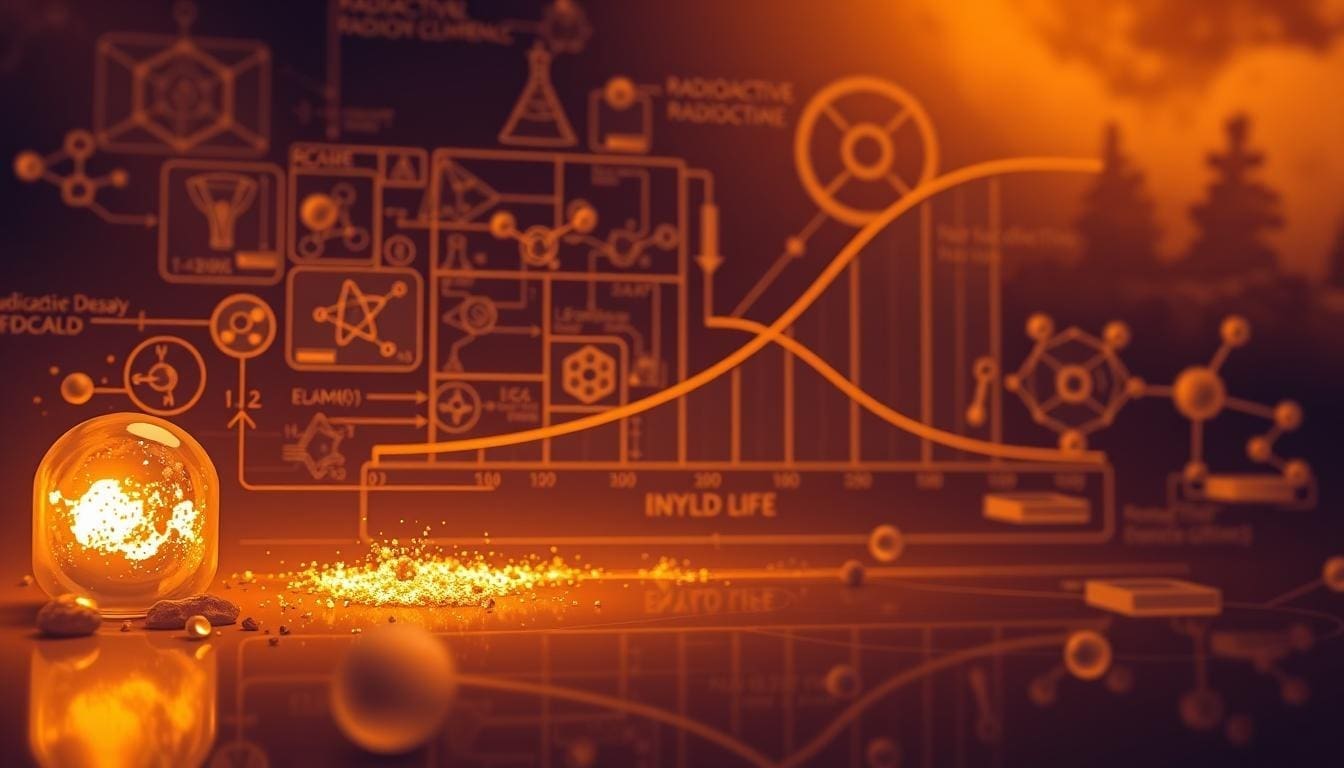Last Updated on November 26, 2025 by Bilal Hasdemir

Ablation is a medical procedure that removes abnormal tissue using energy sources. It helps treat heart rhythm problems and some cancers. Learn what does ablation mean, how it works in medical treatments, and its main uses.
Ablation therapy is a method doctors use to get rid of bad tissue. At Liv Hospital, patients get top-notch ablation therapies. This is thanks to a network known for its clinical excellence.
Key Takeaways
- Ablation is a medical procedure used to destroy abnormal tissue.
- It is used to treat various medical conditions, including heart rhythm disorders and certain types of cancer.
- Liv Hospital offers advanced ablation therapies.
- Ablation therapy is a minimally invasive procedure.
- It is often used as an alternative to traditional surgery.
What Does Ablation Mean in Medical Terms

Ablation comes from the Latin ‘ablatio,’ which means ‘to take away.’ It’s a key term in medicine that has grown over time. Knowing its history helps us understand its role today.
Etymology and Origin of the Term
The word ‘ablation’ comes from Latin, where ‘ablatio’ is about removal. In medicine, it means removing or destroying tissue. This idea has been around for ages, but new tech has made it more precise.
Basic Medical Definition and Purpose
In medicine, ablation is a procedure that removes damaged tissue. It’s used to treat conditions like cancer and arrhythmias. The goal is to fix the problem and ease symptoms.
These procedures are done carefully. They use heat, cold, or chemicals to target the right area. This approach helps avoid harming healthy tissue, leading to fewer side effects and quicker healing.
The Science Behind Ablation Procedures

Ablation procedures use energy to destroy abnormal tissue. They use heat, cold, and lasers to target diseased tissue. This method is a key part of modern medicine, providing a less invasive option than surgery.
How Controlled Tissue Destruction Works
Controlled tissue destruction uses energy sources carefully. For example, radiofrequency ablation uses electrical currents to heat and destroy tissue. Cryoablation uses extreme cold for the same purpose.
The success of ablation depends on controlling the energy. This ensures the diseased tissue is destroyed without harming healthy tissue.
Differentiating Between Target and Healthy Tissue
It’s important to tellthe arget tissue from the healthy tissue. Imaging techniques like ultrasound and MRI help guide the process. They let doctors see the target area and healthy tissue in real-time.
This precision and control have greatly improved patient results. Ablation is now a valuable treatment for many medical conditions.
Types of Energy Sources Used in Ablation
Ablation therapies use different energy sources. Each has its own benefits and uses. The choice depends on the medical condition, where the treatment is needed, and what the doctor wants to achieve.
Radiofrequency Ablation (Heat-Based)
Radiofrequency ablation (RFA) uses heat from high-frequency electrical currents. It’s used for treating cancer and chronic pain. The heat kills cells, shrinking tumors or stopping pain signals.
Cryoablation (Cold-Based)
Cryoablation freezes tissues to destroy them. It’s good for treating tumors and lesions. This method causes little bleeding and less damage to nearby tissues.
Laser and Microwave Ablation Techniques
Laser ablation heats tissues with light, while microwave ablation uses microwave energy. Both are used for cancer treatment. They allow for precise control, protecting healthy tissues.
Chemical and Ultrasound Ablation Methods
Chemical ablation uses substances to destroy tissues. Ultrasound ablation uses focused ultrasound to do the same. These methods offer new ways to treat various conditions.
Advanced Imaging Techniques in Ablation Guidance
Advanced imaging techniques are key in guiding ablation procedures. They improve precision and lower the risk of complications. These technologies have changed the game in ablation, making treatments more accurate and effective.
Ultrasound-Guided Ablation
Ultrasound-guided ablation is a common method that offers real-time images during procedures. It’s great because it’s portable, doesn’t use harmful radiation, and gives constant feedback. Ultrasound guidance is used in many ablation procedures, like those for the heart and liver.
CT and MRI Guidance Systems
CT and MRI systems give high-resolution images needed for complex ablation procedures. CT scans show detailed cross-sections, while MRIs are better at showing soft tissues. These are key for planning and doing precise ablation treatments, even in tricky areas.
Real-Time Monitoring During Procedures
Monitoring ablation procedures in real-time is essential for their accuracy and safety. Advanced imaging lets doctors watch the ablation as it happens. They can make changes on the fly to get the best results. This makes the procedure more effective and safer.
Using these advanced imaging techniques, healthcare providers can greatly improve patient outcomes in ablation procedures. The use of ultrasound, CT, and MRI systems is a big step forward. It brings better precision and safety to the field.
Cardiac Ablation: Treating Heart Rhythm Disorders
Cardiac ablation is a key treatment for heart rhythm problems. It’s a minimally invasive method. It uses energy to destroy abnormal heart pathways that cause arrhythmias.
Common Arrhythmias Treated with Ablation
Cardiac ablation helps with several arrhythmias, including:
- Atrial fibrillation
- Supraventricular tachycardia (SVT)
- Ventricular tachycardia
- Atrial flutter
These conditions happen when the heart’s electrical activity is disrupted. This leads to irregular heartbeats. Ablation is a medical procedure aimed at fixing this by targeting the arrhythmia source.
Catheter-Based Cardiac Ablation Procedures
The most common method uses a thin, flexible tube called a catheter. It’s inserted through a leg vein and guided to the heart. The catheter delivers energy to the heart area, causing the arrhythmia, creating lesions that block the abnormal signals.
Radiofrequency ablation and cryoablation are the main techniques. Radiofrequency ablation uses heat, while cryoablation uses extreme cold to create the lesions.
Success Rates and Long-Term Outcomes
Research shows cardiac ablation can be very effective for some arrhythmias. For example, patients with atrial fibrillation often see big improvements in symptoms and quality of life after the procedure. Success rates vary based on the arrhythmia type, patient health, and the technique used.
Long-term results are mostly good, with many patients staying symptom-free. But some might need more treatments or procedures later on.
Oncological Applications of Ablation
Ablation is a key treatment in oncology, bringing hope to cancer patients. It’s precise and minimally invasive. This makes it great for tumors that are hard to reach or in sensitive spots.
Liver, Lung, and Kidney Tumor Ablation
Ablation is used a lot for liver, lung, and kidney tumors. Radiofrequency ablation (RFA) and cryoablation are top choices. RFA uses heat, while cryoablation freezes cells to death.
These methods are good for patients who can’t have surgery. This might be because of health issues or where the tumor is.
Thyroid and Other Cancer Applications
Ablation is also being looked at for thyroid cancer and other cancers. Ethanol ablation is used for thyroid nodules. It involves injecting ethanol to shrink the nodule.
This method is less invasive than surgery. It can work well for some patients.
Combining Ablation with Other Cancer Treatments
Ablation is often paired with chemotherapy and radiation therapy. This combo can improve treatment results. It attacks the tumor from different sides.
A leading oncologist says, “Ablation can change the game when paired with other treatments. It offers a more complete treatment plan.”
Ablation’s flexibility in oncology shows its importance. As research grows, so will its uses in cancer treatment.
Gynecological Uses of Ablation
Ablation is a big help in gynecology, mainly for heavy menstrual bleeding. It destroys the endometrial lining. This gives relief to women with menorrhagia.
Endometrial Ablation for Heavy Menstrual Bleeding
Endometrial ablation is a treatment for heavy bleeding. It’s a less invasive choice than a hysterectomy. It uses methods like radiofrequency and cryoablation to cut down or stop bleeding.
This method has quick recovery times and avoids big surgeries. But it’s important to talk about risks and results with your doctor.
Other Gynecological Applications
Ablation helps with other gynecological issues,t oo, like some fibroids and polyps. Its flexibility makes it a key tool in women’s health care.
| Condition | Ablation Technique | Benefits |
| Heavy Menstrual Bleeding | Endometrial Ablation | Reduced Menstrual Bleeding, Minimally Invasive |
| Uterine Fibroids | Radiofrequency or Cryoablation | Less Invasive than Surgery, Quick Recovery |
Ablation for Pain Management
Ablation therapy is a promising solution for those with persistent pain. It involves destroying damaged or diseased tissue. This method is increasingly recognized for its effectiveness in pain management.
Nerve Ablation Techniques
Nerve ablation uses different energy sources to block pain signals to the brain. Radiofrequency ablation uses heat to damage nerves, while cryoablation uses cold. These methods have shown great promise in treating chronic pain.
Conditions Treated with Pain-Focused Ablation
Ablation treats many painful conditions, like chronic back pain, arthritis, and neuralgia. It’s very helpful for those who haven’t found relief with other treatments. A study found that ablation significantly reduces pain in chronic pain patients.
“Ablation techniques have revolutionized the management of chronic pain, providing a minimally invasive alternative to traditional surgery.”
| Condition | Ablation Technique | Success Rate |
| Chronic Back Pain | Radiofrequency Ablation | 70-80% |
| Arthritis | Cryoablation | 60-70% |
| Neuralgia | Laser Ablation | 80-90% |
The Ablation Procedure: What Patients Should Expect
Patients getting ablation therapy should know what to expect. This includes preparation, the procedure, and recovery. Ablation means removing tissue, and knowing the steps can ease worries and prepare you.
Pre-Procedure Preparation and Evaluation
Before ablation, a detailed check is done to see if you’re a good candidate. Your medical history, current health, and the condition being treated are reviewed. Diagnostic tests like imaging and blood work help plan your treatment.
During the Procedure: Step-by-Step
During the procedure, you might get local anesthesia to feel less pain. Some might need general anesthesia, depending on the treatment’s complexity and location. A special catheter or probe is guided to the area needing treatment. Then, the ablation is done using energy like radiofrequency or cryoablation.
Recovery, Aftercare, and Follow-Up
After the procedure, you’ll be watched for any immediate issues. Recovery times differ, but most can go back to normal in a few days. Follow-up appointments are set to check how well the treatment worked and to address any concerns.
| Procedure Stage | Key Activities | Expected Outcomes |
| Pre-Procedure | Medical evaluation, diagnostic tests | Determine suitability, plan treatment |
| During Procedure | Ablation using a chosen energy source | Effective tissue destruction |
| Post-Procedure | Monitoring, follow-up appointments | Assess success, manage complications |
Benefits and Risks of Ablation Therapies
It’s important to know the good and bad of ablation treatments. Ablation therapies have many benefits, making them a good choice for many health issues.
Advantages: Minimally Invasive Approach
Ablation is known for being minimally invasive. This means it doesn’t need big cuts like old surgeries. It also lowers the chance of infection and other problems. A doctor said,
“The minimally invasive aspect of ablation therapies has been a game-changer, making it safer with fewer risks.”
Reduced Hospital Stay and Recovery Time
Another big plus of ablation is how it cuts down on hospital time and recovery. People can often go home the same day or soon after. A study found,
“Patients who get ablation usually recover faster, improving their life quality.”
Potential Complications and Their Management
Even though ablation is mostly safe, there are risks like infection, bleeding, and harm to nearby tissues. But, with the right care and watch, these risks can be handled. A medical journal noted,
“Though complications can happen, good planning and aftercare can greatly lower these risks, making treatment safe.”
In summary, ablation therapies are a great option with many benefits. They are less invasive and help you recover faster. Knowing the risks and how to handle them helps patients make smart choices about their health.
Conclusion: The Evolution and Future of Ablation in Modern Medicine
Ablation has changed a lot over the years. This is thanks to new technology and techniques. Knowing what ablation means and how it’s used is key to seeing its importance in today’s medicine.
Ablation means a way to remove diseased tissue without babigurgery. It’s a less invasive option compared to old surgical methods.
The defined ablation process uses energy like radiofrequency, cryoablation, and laser to kill off bad cells. It’s used to treat many issues, like heart problems, cancer, and chronic pain.
Looking ahead, ablation’s future in medicine is bright. New studies and inventions will likely make treatments better. They will also help more people and improve care for all.
With its growing role, ablation will keep being a key part of medical care. It offers a safer and more effective way to treat patients compared to older methods.
FAQ
What is ablation?
Ablation is a medical procedure. It destroys or removes damaged or diseased tissue. This is often done using heat, cold, or other energy forms.
What does ablation mean in medical terms?
In medicine, ablation means removing or destroying tissue. It’s used to treat conditions like arrhythmias, cancer, or heavy menstrual bleeding.
What are the different types of ablation?
There are many types of ablation. These include radiofrequency, cryoablation, laser, microwave, and chemical ablation, among others.
What is radiofrequency ablation used for?
Radiofrequency ablation treats conditions like arrhythmias, certain cancers, and chronic pain. It applies heat to the affected tissue.
How is ablation guided?
Ablation procedures use advanced imaging like ultrasound, CT, or MRI. This ensures precision and minimizes damage to nearby tissue.
What is cardiac ablation?
Cardiac ablation treats heart rhythm disorders, like atrial fibrillation. It destroys abnormal electrical pathways in the heart.
Is ablation a surgical procedure?
Ablation is often a minimally invasive procedure. It doesn’t require a large incision or open surgery.
What are the benefits of ablation?
Ablation’s benefits include being minimally invasive. It also reduces hospital stay and recovery time compared to traditional surgery.
What are the risks of ablation?
Risks of ablation include bleeding, infection, and damage to nearby tissue. There’s also a chance of reaction to anesthesia or medications.
How is ablation used in cancer treatment?
Ablation treats certain cancers, like liver, lung, and kidney tumors. It destroys the cancerous tissue.
What is endometrial ablation?
Endometrial ablation treats heavy menstrual bleeding. It destroys the lining of the uterus.
Can ablation be used for pain management?
Yes, ablation can treat chronic pain. It destroys the nerves that send pain signals.
References
Angioni, S., D’Alterio, M. N., Nappi, L., & Daniilidis, A. (2021). Endometrial ablation: A review of a common gynaecological procedure. Gynecological Surgery, 18(1), 1. https://www.ncbi.nlm.nih.gov/pmc/articles/PMC7937748/






